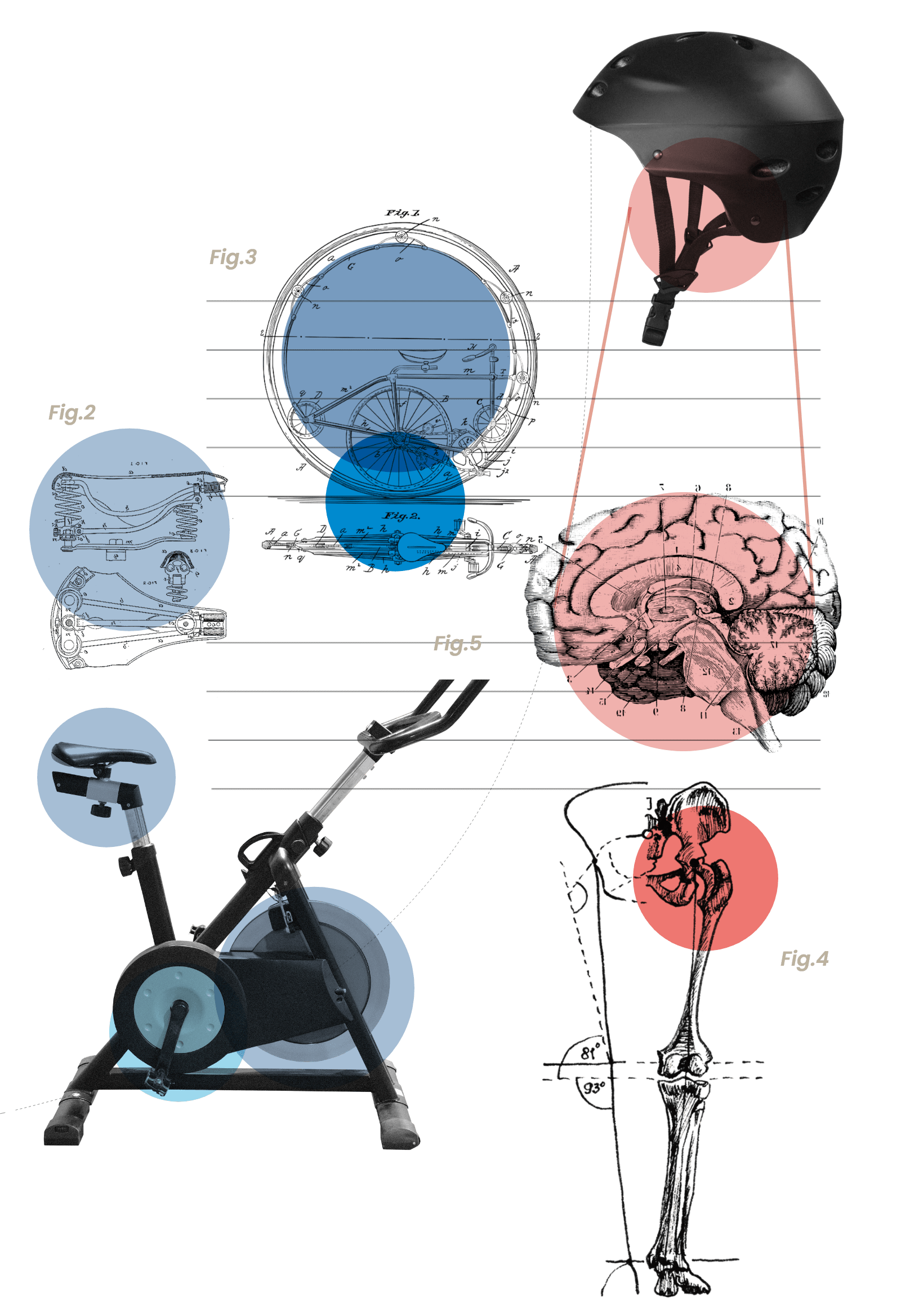Story 4
#4


Cycling can help reduce Parkinson's symptoms
Cycling can help reduce Parkinson's symptoms
Life takes many turns. And sometimes, it turns right into a Parkinson’s diagnosis.
Fortunately, if there’s one thing that recent years (and studies) have shown us, it’s that exercise can help us turn that around by greatly counteracting movement problems, improving balance and muscle strength.
Cue in the study of researcher Bas Bloem, at the Radboud University Medical Center in the Netherlands, that recruited 130 volunteers with Parkinson’s and divided them into two groups:

Fig. 1 Bas Bloem
Fig. 2 Velocipede saddle patent, J.B. Brooks, 1889
Fig. 3 Monocycle patent, J.W. Finch, 1894
Fig. 4 Adult human leg, tibia, posterior view
Fig. 5 Middle and anterior-posterior section of brain, Usual Medicine Dictionary, Dr Labarthe, 1885

pedaling on an exercise bike — while responding to motivational challenges in an app —, while the other just performed stretching exercises.
6 months, 45 minutes a day, 3 times a week later, the results were clear: the first group reported significant improvements in motor skills, without increased risks, proving that exercise helps to soothe the most severe symptoms.
“This is a very important study, which now allows us to start studying the benefits of regular cycling in improving Parkinson’s symptoms. Furthermore, this more playful approach can be particularly suitable to building exercise habits in patients,” concludes Bloem.
Fig. 1 Bas Bloem
Fig. 2 Velocipede saddle patent, J.B. Brooks, 1889
Fig. 3 Monocycle patent, J.W. Finch, 1894
Fig. 4 Adult human leg, tibia, posterior view
Fig. 5 Middle and anterior-posterior section of brain, Usual Medicine Dictionary, Dr Labarthe, 1885
ON/JUN22/G/083
date of preparation June 2022




















